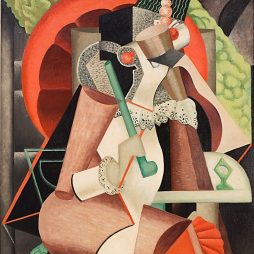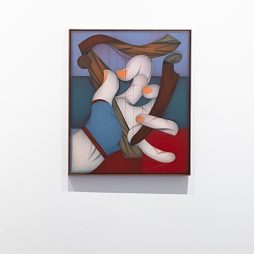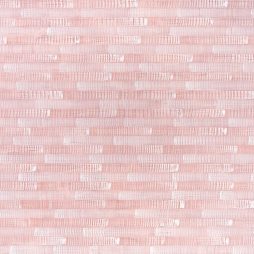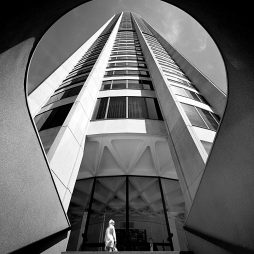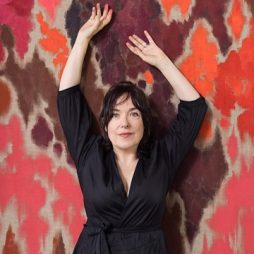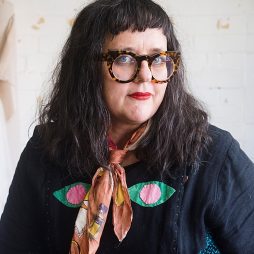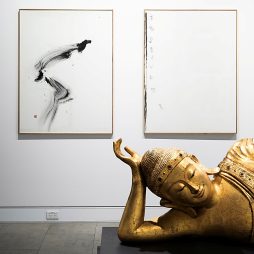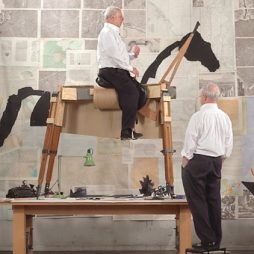The Intelligence of Painting
The wall text at the entrance says the exhibition explores “the energy of contemporary painting in Australia today through the work of 14 Australian women artists.” While this is true, it could have just as accurately read: the energy of contemporary painting in Australia today through fourteen paintings, as each artist is represented by only one artwork in this one room exhibition at the Museum of Contemporary Art, Sydney. The exhibition draws from recent paintings acquired by the museum and also a number of loans. I hazard a guess that many of the paintings by women in the collection are new or recent acquisitions, as are many collections of women’s art in galleries around the world.
How do these artists’ lone works fair at representing contemporary painting in Australia today? With this abridged exhibition it might be difficult to draw any substantial conclusions, but collection hangs often feature just a single painting or work by an artist to illustrate their contribution to a movement, style, or school of art. With a thematic focus, as well as the title The Intelligence of Painting, cast upon this particular hang it suggests these works should have something to say about Australian painting now.
Most of the fourteen artworks featured were painted between 2022 to 2024, with Jenny Watson’s large blue canvas, First Beer, from 2018, being one of the earliest inclusions. It is also one of the largest paintings in the exhibition positioned directly next to the smallest: a neat, compact yet powerful still life by Jude Rae, SL508 from 2024. Watson’s endearingly naïve style immediately resonates, as does the comic scene depicted—a young girl’s first beer, handed to her in the backyard by who you assume to be her father. The inclusion of blue embroidered flowers on the canvas’ surface echo the flowers held by the girl and pull the viewer out of the scene, while also drawing a reading of girlhood innocence as this young woman embarks on a coming of age experience. Watson’s style contrasts sharply with Rae’s restraint and precision in her depiction of a blue patinaed box and cream coloured flask, sitting next to each other on a tabletop, a bright 70s green—or 2024 brat—stripe creates the table’s edge and the third strong horizontal line in this simple composition.
Jelena Telecki’s Rendezvous 2 from 2024 continues in the vein of Telecki’s recent sexually charged paintings, it is from the series ŽUR. Here the motorbike rider is naked, except for black high-heels, not stilettos as one might expect, but the less sexually coded and more sensible choice of black pumps. The motorbike wheels are wrapped in white bandages or sheeting; smoke pours from the exhaust pipe of the bike while the rider seems to hold the bike’s headlight in position. Her own head and shoulders ambiguously slumped onto the bike itself or falling just outside the edge of the painting creating a highly cropped and anonymous framing of this figure.
Telecki’s painting is adjacent to a pink hued Prudence Flint work from 2022 titled The Bath. While I have long been a fan of Telecki’s work, I have also long been a fan of Flint’s. Seeing the pairing of these two vastly different painters and their representations of female figures leaves me appreciating the exhibition for this alone. It also draws to the conclusion that this must surely be the energy and intelligence of painting today: the everyday energies of these painter’s inner lives and imagination.
The surface level whimsy paired with deeper psychological tensions in Flint’s work is appealing. For three decades Flint has painted women in domestic interiors, her figures holding a simultaneously realistic but also dysmorphic quality: parts of their bodies enlarged or shrunken, but only subtly so. This figure stands in a half-full bath, holding her head in her hands, while a tiny sailboat floats beside her, and a mysterious pink apple sits on the side of the bath. The delicate restraint in her brushstrokes complement Telecki’s own careful surfaces while depicting different subject matter.
Works of figuration and abstraction sit in roughly equal numbers across the four walls. Within the Garden (Autumn Painting 2) from 2022, is a large yellow abstract from Eleanor Louise Butt. According to the wall text, it is a work of abstraction with hints of autumnal leaves that reach for representation only to dissolve again into abstraction. For me it reads entirely as abstract, a vibrant colour-focused work alive with energetic gestural brushstrokes. The work nods across to the opposite wall where a large and colourful canvas by local Sydney artist Gemma Smith titled Compression dissolve, 2024, also bounces these colourful, loose and spontaneous brushstrokes around its large surface.
Country and landscape feature across abstract and realist works, Thea Anamara Perkins’ work Return, 2024, shows three children with their father crossing flooded red dirt plains while a car with attached caravan sits to the right hand-side of the painting. Nyapanyapa Yunupiŋu’s painting on bark, Djulpan, 2021, is adjacent, while across the gallery sits Julie Nangala Robertson’s, Mina Mina Jukurrpa, 2024; their different approaches form an enjoyable triplet of paintings by Aboriginal women in this exhibition.
The curators, Suzanne Cotter and Manya Sellers, have opted to talk about the energy and intelligence of the works, these two broad terms form an encompassing framing that dispenses with the need to draw any specific conclusions. It can be surmised though that the energies are varied, as would be expected at this moment in contemporary art. The evergreen subject matter of domestic interiors and still life feature across a number of works: Flint, Rae, Watson and others. While abstraction and a sense of fun, movement, and gesture in paint appear in Butt’s, Karen Black’s, and Smith’s works speaking to the broader moment of flexibility and freedom where painting is further sheading past expectations placed upon it. What is absent though, other than the Jenny Watson perhaps, is the “bad figurative painting” style that is prevalent in other contexts—such as in ARIs across the country or on Instagram accounts across the world.
What can be read from these fourteen paintings is the varied lives led by these women as they depict their experiences, and how they relate to and conceptualise their world. While there isn’t an easily discernible shared style among the works on display, there are some threads or tendencies visible, including the freedom of gestural brushstrokes in a number of the abstract works on shown. Would a shared style or movement become visible if the show was a larger survey of Australian painting now? Movements seem to no longer be medium or discipline specific, but more discernible through subject matter, theme, or political intentions, explored across various disciplines. Or perhaps any shared attributes are difficult to see at the time, only becoming visible in hindsight? While this review doesn’t provide any answers to these questions, what was deeply enjoyable in viewing this exhibition was the pairings that emerged, for example, Telecki’s work seen next to Flint’s, Perkins next to Yunupiŋu, the disjunction between Watson and Rae, or Butt and Smith’s abstract wink to each other from across the room.










